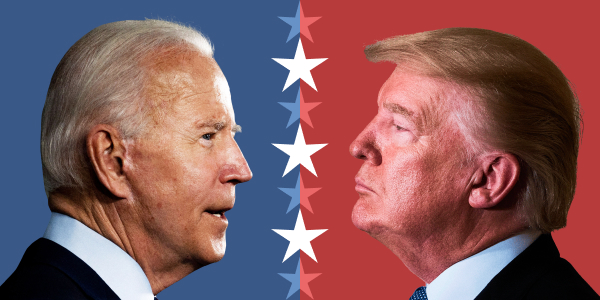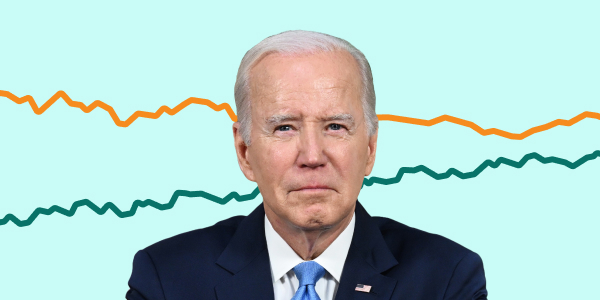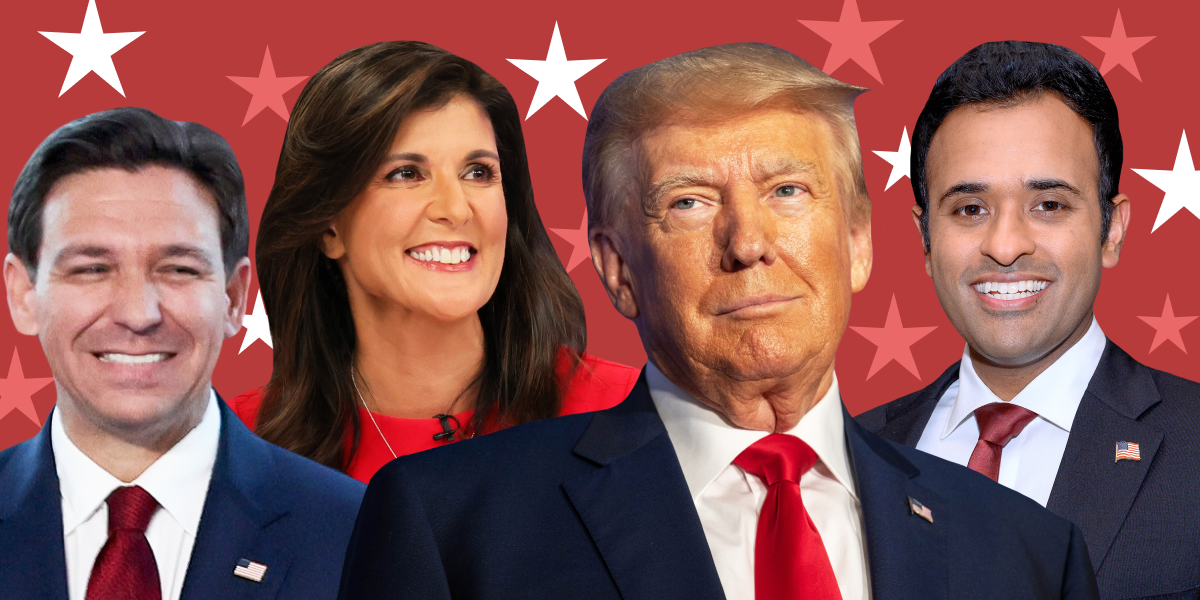Populist economics blare forth from Harris, Trump campaigns
By Tobias Burns - 8/24/24, 12:00 PM EDT

Presidential candidates who’ve secured their party’s endorsement ahead of a general election have traditionally pivoted toward the ideological center on issues of economic policy in order to appeal to middle-class moderates of both parties.
Not so in 2024.
Economic messaging from both Democrats and Republicans is targeting lower-income voters and sounding unabashedly populist notes as candidates scramble to appeal to a polarized electorate in key battleground states.
The Democratic National Convention, which concluded Thursday evening, was marked by policy proposals that centered on households’ bottom lines, with measures to bring down the costs of food, health care and housing costs.
The overall message was one of financial commiseration, standing in sharp relief to the high-minded broadening out of party platforms that’s been a typical feature of past conventions.
“This isn’t going to the center at all,” Gary Hufbauer, a senior fellow at the Peterson Institute for International Economics, a Washington think tank, told The Hill.
“They’re pitching to the roughly 5, maybe 7 percent of undecided voters in the seven battleground states and hoping that a good portion of those are not middle class, but are people who are feeling marginalized — either younger people or minority people, people who are not feeling great about the economy,” he said.
Vice President Kamala Harris’s economic proposals include a federal ban on price gouging on food, cost-lowering mechanisms for insulin and other prescription drugs, and new ways to cancel medical debt.
She also proposed a sweeping new construction plan for affordable housing, which has been in short supply in the U.S. for more than a decade and exacerbated amid broader pressures on housing prompted by the Federal Reserve’s recent spate of interest rate hikes.
“By the end of my first term, we will end America’s housing shortage by building 3 million new homes and rentals that are affordable for the middle class,” Harris promised. “We will make sure those homes actually go to working- and middle-class Americans – not just investors.”
Senate Democrats have swept in to amplify Harris’s messaging on basic costs and the financial stresses facing households, touting the expansion of tax credit programs that helped lower and middle-income families during the pandemic.
“Her economic agenda goes after the expenses that hit American families the hardest,” Senate Finance Committee Chair Ron Wyden (D-Ore.) said in a Friday statement. “Vice President Harris has committed to expanding [the child tax credit], lifting millions of kids out of poverty and providing extra support for families in the first year of a child’s life, when expenses are especially high.”
The proposed ban on price gouging on food drew an immediate critical response from business groups and traditionally minded economists who likened it to price controls, warning that it could backfire.
“We have seen these types of proposals for government control over prices before and there is a reason they are not put into practice. Namely, they make the problem worse,” the U.S. Chamber of Commerce business lobby said in a Friday statement, without mentioning the Harris plan by name.
University of Pennsylvania economist Kent Smetters told The Hill that price controls can lead to shortages because businesses are loath to produce goods they can’t turn a profit on. He cited price caps in gasoline and rent control on municipal housing that have led to shortages of both.
“You’re going to stop doing it if you can’t charge for it,” he said. “There’s not too many economists who would say that that is effective.”
Hufbauer made much the same argument. “This should not become a serious policy – how are you going to define it?” he said. “If you do anything serious, you’re going to get shortages and black markets.”
Lindsay Owens, an economist and executive director of the progressive think tank Groundwork Collaborative, said Harris’ price-gouging plan, which echoes a Federal Trade Commission report from earlier in the year that called out excessive profits in the grocery sector, should not be considered as a form of governmental price controls.
“This is not price controls,” she said on the CNBC television network on Monday. “Forty states have price gouging laws on the books. These are red states, these are blue states.”
While so far steering clear of measures that could be thought of as price caps, Republicans have also leaned into more populist messaging on economic policy through the 2024 election cycle.
Through the Republican National Convention, the Trump camp focused on issues that are especially relevant to lower-income voters, with the former president pledging to cancel taxes on tips for workers in the service sector and enacting large-scale tariff regimes meant to boost domestic jobs and increase wages.
“I got my information from a very smart waitress – that’s better than spending millions of dollars [on political consultants],” Trump said at his party’s convention in July. “Let me ask you a question: Would you be happy if you had no taxes on tips? She said, ‘What a great idea.’”
Trump has also talked about large-scale restrictions on immigration along with a “mass deportation campaign,” meant ostensibly to protect American workers and boost pay.
Economists and business groups have fretted just as much, if not more, about Trump’s proposals as they have about Harris’s, with the libertarian Cato Institute openly lambasting them.
Trump’s proposed 10-percent general tariff would be “economically ignorant, geopolitically dangerous, and politically misguided,” Scott Lincicome, head of Cato’s Herbert A. Stiefel Center for Trade Policy Studies, wrote in a 2023 policy brief.
Republicans, who had been fiercely critical of tariffs before Trump became the party's standard bearer, say the policies burnish his image as a “working class president.”
Recounting a meeting between Trump and Republican senators, Sen. Kevin Cramer (R-N.D.) told reporters in June that Trump’s image was a topic of discussion, specifically in reference to his interaction with the Nevada waitress who’d helped him come up with the idea to cancel taxes on tips.
“He told the story about how he came up with it. It was in the context of … a statement by Tim Scott that he’d become the 'working class president,' the person that speaks to them and for them. The tips thing was genius,” Cramer said.
Despite the hand-wringing of economists and policy traditionalists, economic activity at the lower end of the income spectrum may have been a defining factor in the 2022 midterm elections, in which Democrats beat back an expected “red wave” of Republican support to remain in control of the Senate.
Low-income workers saw outsized wage gains between 2020 and 2022 on the back of major federal economic stimulus and some of the strongest overall labor conditions for workers in years that allowed people to switch jobs and increase their pay.
Termed “wage compression,” the uptick for low-wage workers was first identified by researchers at the University of Massachusetts Amherst.
“It’s hard to overstate how big of a change this is, compared to the previous 40 years of quasi-stagnation for low wages (and abysmal recovery from the Great Recession),” University of California economist Gabriel Zucman wrote in 2022.


















